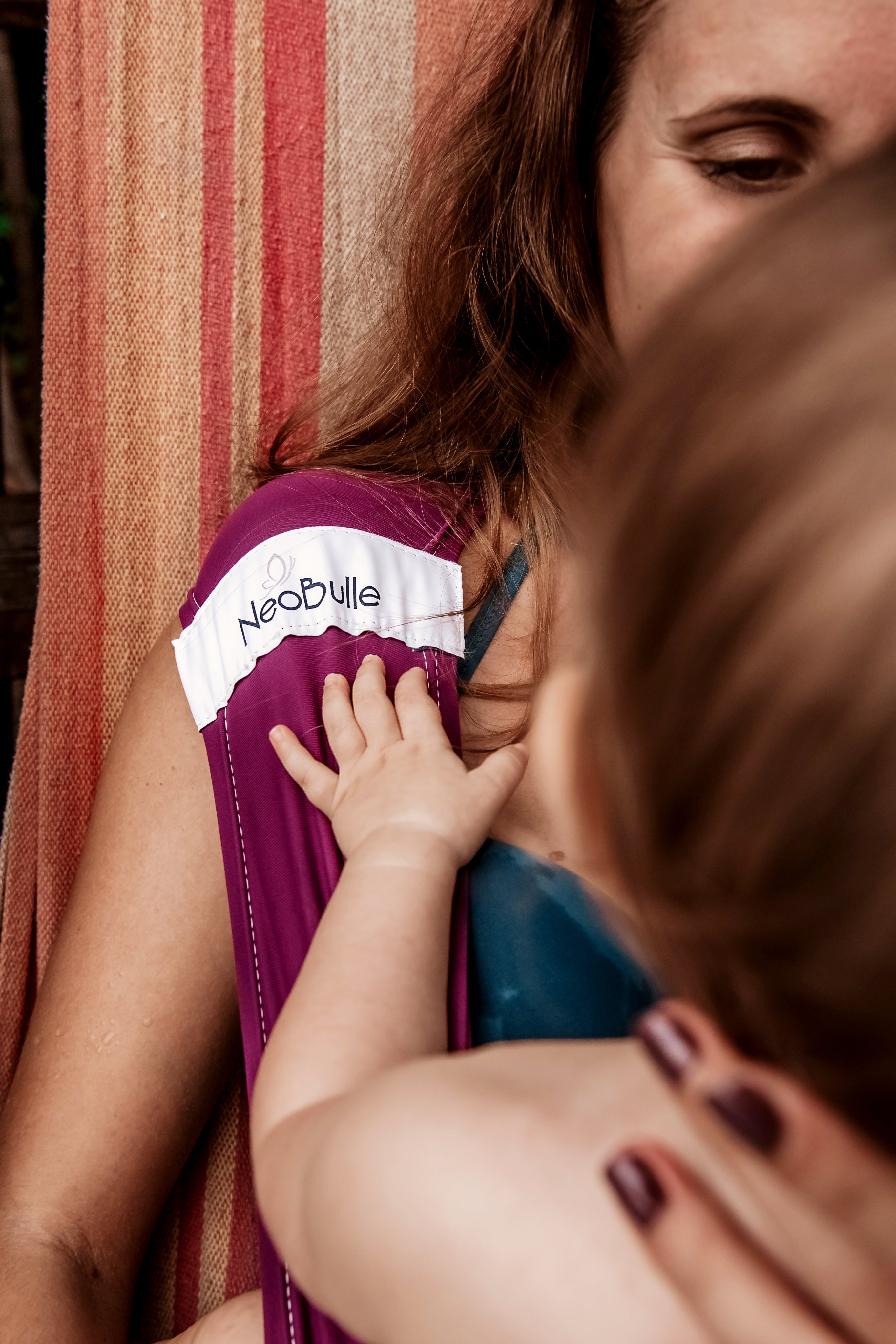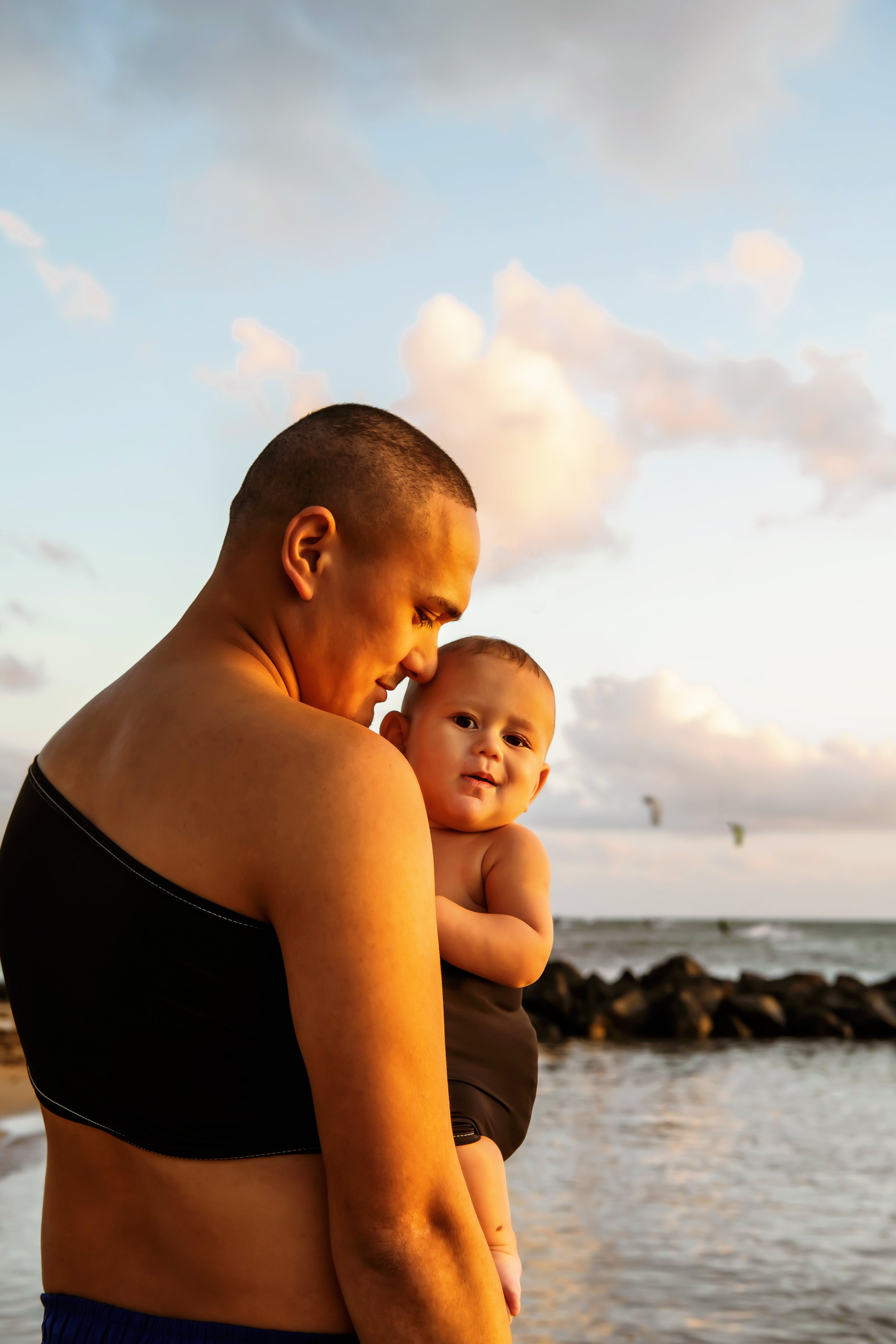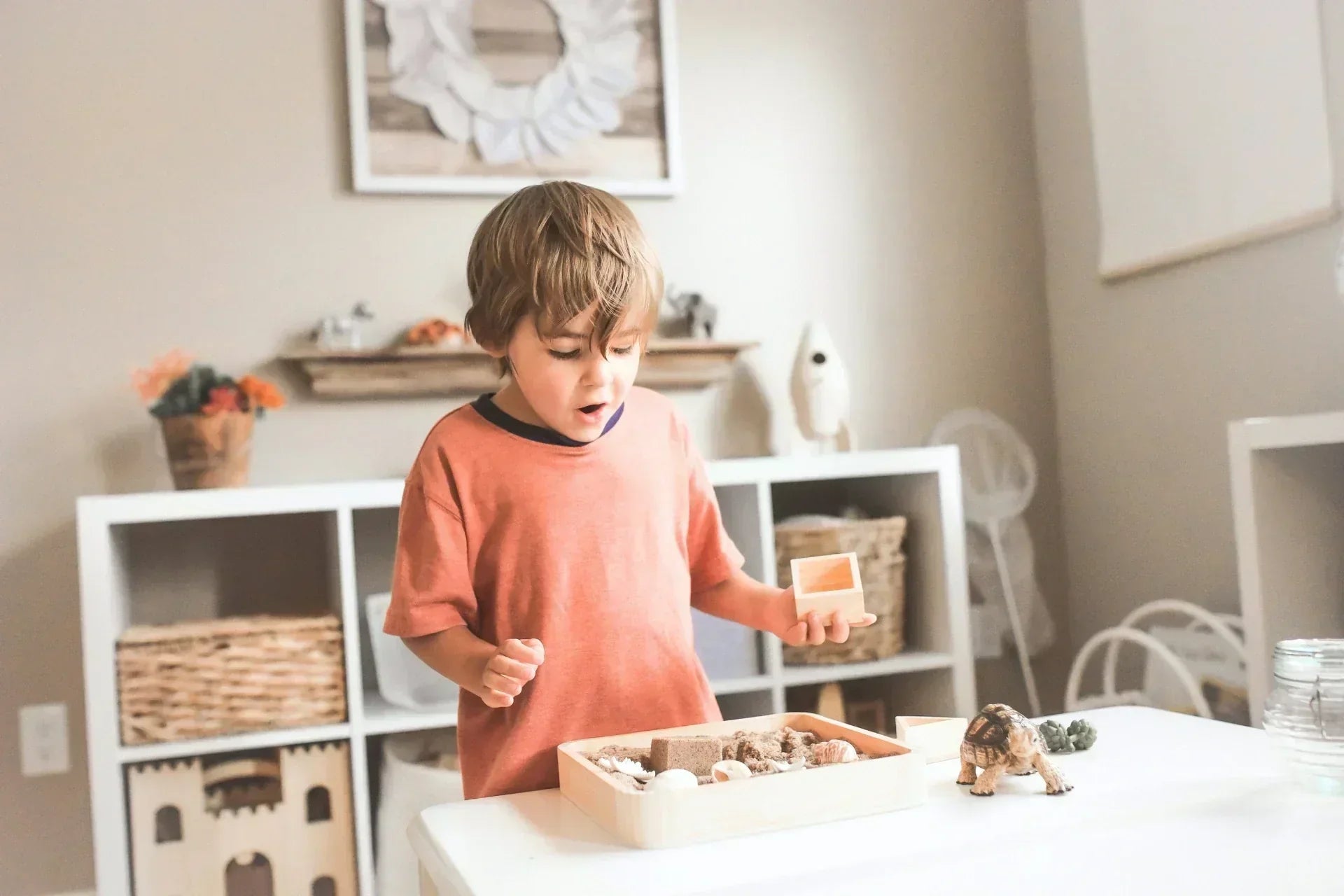Here it is, your baby is here! The only remaining question is: at what age is it safe to use a baby carrier? First of all, it depends on the model. To help you see more clearly, here are the options for each age group.
Carrying a baby is a precious practice, both ancestral and universal, and ideal for reducing the mental load of young parents. Passed down through generations in certain cultures, it is now attracting more and more families thanks to its many benefits.
It is also a natural response to the needs of parents and the infant. After spending 9 months cradled in the uterus, the baby discovers a new world. It doesn’t realize that it is safe in its cradle… but instinctively, it knows it is safe in your arms. No wonder it calms down so easily there. However, these arms are also essential for daily tasks. Carrying takes on its full meaning here: it frees your hands while preserving the soothing proximity that the baby needs.
After reading, you will know exactly which baby carrier to choose depending on your child's developmental stage!
Summary- From what age is it safe to use a baby carrier?
- Focus: from what age can you use a preformed baby carrier?
- Focus: carrying scarf or sling, what’s the difference?
- From birth to 4 months: physiological and adjustable carrying
- From 4-6 months: explore new positions
- From 12 months or once walking is acquired
- Questions about carrying based on the baby’s age
- Questions about installing the baby
- In conclusion
From what age is it safe to use a baby carrier?
It is quite possible to carry a baby from birth, provided you choose a model suitable for its size. The important thing is to respect its physiology: rounded back, tilted pelvis, knees raised, and head well supported. It is indeed the baby carrier that must adapt to the baby’s age, not the other way around. The key is to respect the natural position that the toddler adopts spontaneously: this is called the “physiological position.” In short, using a baby carrier is good. But opting for a model adapted to your child's age and development is even better. To do this, here are three essential tips, regardless of the model used:
- Check the physiological position: tilted pelvis forward, knees higher than the hips, rounded back, head well supported.
- Adjust the position as the baby evolves: over the months, you can choose to carry the baby on your hip or on your back.
- Carry your baby against your stomach: facing the world is not recommended, prefer the hip or back position.
- Follow the manufacturer's recommendations: each baby carrier has its own specifics (minimum weight, recommended age, etc.).
💡 At Néobulle, our models are designed with perinatal professionals to adapt to the baby's development while ensuring the comfort of the wearer. Padded straps, flexible waistband, breathable and soft fabrics, intuitive adjustments… everything is designed to meet your needs.
Quick tip: from what age can you use a preformed baby carrier?
A physiological and adjustable baby carrier, adjustable in width and height, can be used from 4kg. The MyNéo, a flexible and adjustable model, is even suitable from 3kg thanks to its innovative 3D knitted fabric!
However, more rigid models, which are less adjustable in height or seat level, are not recommended until the child can sit alone, around 5-7 months.
➡️ To learn everything about models suitable for newborns, check out our article "Which preformed baby carrier to use from birth?"!

Quick tip: sling or wrap, what’s the difference?
It’s not always easy to distinguish between different carrying methods. For the preformed baby carrier, it’s quite visual: it is made of straps and clips. For other alternatives, let’s review them together!
The sling: quickness and lightness
The sling is a short strapless wrap that adjusts with rings.
The carrier is asymmetrical, so the fabric passes over only one shoulder. Suitable from birth up to 10-12 kg, it allows carrying on the stomach or hip, both inside and outside. Practical for breastfeeding or bottle-feeding, quick to handle, and easily slips into a bag.🎥 Discover the basic sling setup !

The babywearing wrap: comfort and optimal adjustment
The babywearing wrap is a long piece of fabric, several meters long. Often intimidating at first glance, it offers optimal comfort, adjusts perfectly to the size of the wearer and the baby, with precise support. It can be tied in dozens of ways: on the stomach, hip, back... For an ideal weight distribution, use it symmetrically, with fabric on each shoulder. In stretch version, it is suitable up to about 8kg. In woven version, like in the photo, it is suitable up to 18kg! Compatible with breastfeeding, it requires some practice to get used to.
🎥 Discover the basic woven wrap installation !

Our recommendations for each age
Now that you know at what age to use a baby carrier, let's see which models correspond to each stage!
From birth to 4 months: adjustable physiological carrying
From 3kg, carrying is possible thanks to solutions that adapt to the infant's morphology:
- à the traditional babywearing wrap, stretchable (with at least two layers of fabric on the baby's back) or woven
- to the cotton sling,
- a preformed adjustable in height and width like the My Neo or the Neo,
The sling and wrap, for example, allow very precise adjustment: we talk about tightening fold by fold. The fabric thus envelops the entire little one. The My Neo, on the other hand, has no seams and has the perfect elasticity to fit your baby's body perfectly.
The goal? To promote proximity, which is beneficial for:
- strengthening the attachment bond,
- reduce reflux (GERD),
- soothe baby's crying,
- facilitate falling asleep,
- allow thermoregulation, thanks to the carrier's body heat,
- limit the risk of plagiocephaly
- promote the secretion of prolactin and oxytocin (yes, you can breastfeed in a baby carrier!)
💡MyNéo or Néo, what's the difference? These two preformed baby carriers are adjustable in width and height, thus adapting to an infant's size. The MyNéo is made of 3D knit, an innovative, slightly stretchable material. With its low price, it is particularly designed for use from birth to 12 months. The Néo is made of wrap fabric. Flexible and adaptable, it suits from birth to about 18/24 months, depending on your child's morphology.
À partir de 4-6 mois : explorez de nouvelles positions !
The development of your baby progresses: increasingly curious, they observe, turn their head, look at their surroundings. It is often around 4-6 months that we start to question the possibility of using a baby carrier facing the world.
However, carrying facing the world is not recommended
. Indeed, this position exposes the child to too many stimulations which they cannot turn away from by snuggling against the carrier. Moreover, their spine is pressed against your chest and cannot be wrapped from the start. This type of baby carrier is designed so that the baby is supported by the crotch, which is uncomfortable. Finally, if the baby falls asleep, their head will sway forward, like when falling asleep on a plane or train, which strains the neck. As you understand: this is not ideal. Therefore, explore alternative positions:- On your hip, for example with a woven wrap or sling,
- On your back, with your woven wrap, preformed baby carrier, or a mei-tai, these hybrid carrying methods that combine quick setup with a clip belt and the comfort of a wrap with tied straps.
💡 Many parents mention the Pti-Evo as a trusted solution for carrying the baby on the back with confidence!
https://youtu.be/Jb36-kOKPHI?si=ttvPKMm38gtkWlhJ&t=246
From 12 months or once walking is acquired
When the baby starts walking, carrying becomes more occasional but remains a valuable daily aid. For dropping your child off at the nanny or at daycare, for running errands, using public transport, during walks (a 12-month-old's legs tire quickly!).
At this stage, you will probably want to prioritize hip and back positions.
💡 The Neo+ baby carrier emphasizes versatility thanks to its adjustable seat and height. Wondering at what age to use this carrier? It is suitable from 3 months to 3-4 years old, making it a long-lasting solution!
FAQ - Frequently Asked Questions about Carrying and Child Age
Questions about carrying according to the baby's age:
Can I carry from birth?
Yes, unless contraindicated medically. For young mothers, it is recommended not to overstrain immediately postpartum to protect the perineum. Carrying is, of course, still possible but for short periods. The co-parent can take over in the first few weeks.
💡 Good to know: Limit the use of baby carriers to rigid, low belts that compress the carrier's abdomen. Prefer soft belts worn high, at the waist level, to reduce any pressure on the perineum.
Should I wait until my baby can hold their head to carry them?
No, if your baby is positioned physiologically (upright, pelvis tilted forward, knees higher than hips), their head will naturally stay aligned with the spine, against the carrier's chest. The fabric should reach up to their nape. If their head swings, adjust the settings: simply tighten the fabric a bit more or tighten the strap.
Up to what age can I use a baby carrier?
There is no fixed limit. The key word? Listen to your child. Continue to carry your child as long as it suits both of you. The duration and frequency of carrying sessions evolve over the months. Generally, it becomes less frequent when the child starts walking.
💡Good to know : you will notice that manufacturers indicate weight ranges for use on packaging and tags of their baby carriers. For example, from 3.5kg to 20kg. Keep in mind that these indications are based on safety tests carried out. This does not mean that the use will be physiological for a 20kg child. Each baby has its own size... and there is no one-size-fits-all model perfectly adapted from 0 to 3 years, for example. That is why at Néobulle, we have chosen to restrict the age of use of our baby carriers according to specific age ranges, for optimal back support for children.
Questions about installing the baby:
Should I tuck my baby's feet into the fabric?
No, always keep your baby's feet outside the carrying device. The goal: avoid activating the primitive reflex of automatic walking, otherwise your baby will push against the fabric and "stand". Therefore, opt for an adjustable baby carrier, whose seat adjusts to your baby's size.
Is it better to cover my baby's head with the fabric to better hold their head in place?
No, it is not recommended to cover your baby's face, regardless of their age. The fabric should stay at the level of their neck so that the respiratory pathways are clear. This allows for safe carrying. Your child will be able to move their neck, strengthen their muscles, and observe their surroundings.
Is it possible to sit with a baby carrier?
Yes, regardless of your baby's age. Make sure not to compress their legs, but rest assured: you can eat, work, paint, play the piano... all while sitting and carrying your baby.
In conclusion
In summary, you can practice physiological carrying from birth by using equipment suited to your baby's size. Carrying and the type of installation evolve according to your child's age. Wraps, slings, preformed or hybrid baby carriers, each method meets specific needs. Some, like woven wraps, will accompany you from birth to preschool. Others are more suitable for a specific age range.
To conclude, keep these 3 key points in mind:
- Respect your baby's physiology,
- Adapt the carrying method or installation to the child's age, development, and needs,
- Prioritize safety throughout carrying : clear airways, vertical carrying, high and properly adjusted installation.
By applying these tips, carrying becomes a true extension of the intra-uterine cocoon, providing comfort, proximity and freedom to parents. To extend this experience, do not hesitate to get support from a carrying instructor or to register for virtual workshops led by the Neobulle team!





